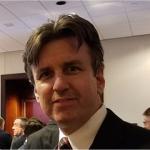
1. Washington Post published an op-ed with a provocative title - Scientists know plastics are dangerous. Why won’t the government say so? - so it seems strange that with "Scientists know" as the first two words no editor asked the writer to include at least one scientist.
But they didn't. You can further imagine my disappointment when instead of it being a legitimate journalist the op-ed writer turned out to be anti-science hatchet man Paul Thacker, whose middle name could be changed to "Retracted" after his conspiracy rants have been pulled from so many science publications. He's certainly the go-to guy for trade groups such as Organic Consumers Association and chemophobia fanzines like Environmental Health News and, of course, lawyers at NRDC, but he is useless to public understanding of science and health. Still, the public don't pay his bills like they do ours so it's no surprise that Thacker curries favor by using as a source...you guessed it...a lawyer from NRDC. Attorney Erik Olson is important to activists because NRDC is a $100 million juggernaut. Because he is important activists fall all over themselves promote him. Olson has been exposed for trying to game at least one journal, Science, when secret documents revealed that Pete Myers ghost-wrote at least one pitch to their editor for the lawyer. What publication does Myers put out? Environmental Health News. Thacker's other sources are just as bizarre. A pediatrician who claims EPA, FDA, and the US National Toxicology Program are all being manipulated by Big BPA, a sociologist, and a statistician. Given that, want to bet Myers provided all of the "information" for Thacker?

He does do one important thing for public awareness - he links to his entry on Deniers For Hire. If you want to know about the secret funding sources for discredited former journalists like Thacker, I agree you should look there first. It's the only thing Thacker got right in his 1,400 word fable.
2. In more literate media efforts, oncologist Robert Sklaroff, M.D., and Stephen F. Gambescia, Ph.D., professor at Drexel University, take American Cancer Society, American Heart Association, the American Lung Association, the National Comprehensive Cancer Network, the Campaign for Tobacco-Free Kids, the Truth Initiative and more to task for claiming to care about public health - unless it means conceding that vaping products, a bottom-up, free market solution to the scourge of cigarette smoking, work better than overpriced advertising campaigns by centralized authorities.
3. In Pittsburgh Courier, they link to our work on heart disease when discussing that the Pittsburgh chapter of the American Heart Association (AHA) has established a Young Professionals division, geared to a younger demographic. Heart disease is on the rise, including among young people, but instead of it being a systemic conspiracy by Big Chemical like activists claim, it is simply too many pizzas.
4. There were two radio appearances last week:
Michael Medved om distrust in the media. (Need a subscription.)
https://www.medvedmedhead.com/2018/09/12/michael-medved-show-9-12-2018-h1/
Real Science with Dr. B -- Sept 13 edition
http://kvi.com/podcast/kirbycast-september-13th-3pm-hour
5. In Imperial Valley News, Jane Orient, MD, did not like that our female Director of Medicine, Dr. Jamie Wells, scolded a male Texas doctor for claiming that the salary/gender gap among doctors was due to women working less. We won't all agree on everything. What we do agree on is that medical care is now overwhelmingly weighted by government. There are more female pediatricians and their visits with new parents take a lot longer than a surgical consultation. But guess who government pays more? That's not a lack of work on the part of female doctors.



